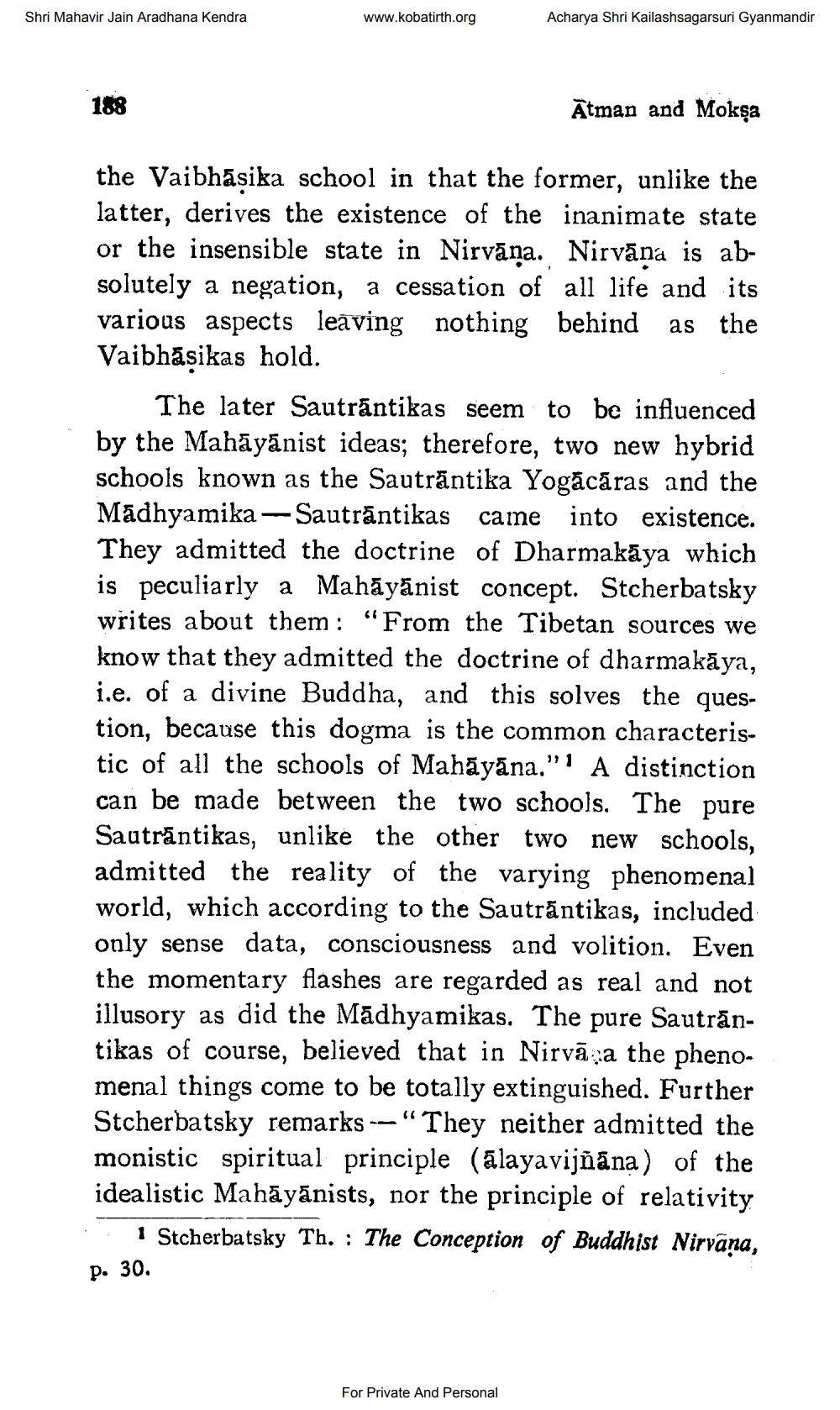________________
Shri Mahavir Jain Aradhana Kendra
www.kobatirth.org
Acharya Shri Kailashsagarsuri Gyanmandir
188
Atman and Moka
the Vaibhāsika school in that the former, unlike the latter, derives the existence of the inanimate state or the insensible state in Nirvāna. Nirvana is absolutely a negation, a cessation of all life and its various aspects leaving nothing behind as the Vaibhásikas hold.
The later Sautrántikas seem to be influenced by the Mahāyānist ideas; therefore, two new hybrid schools known as the Sautrāntika Yogācāras and the Madhyamika - Sautrántikas came into existence. They admitted the doctrine of Dharmakāya which is peculiarly a Mahāyānist concept. Stcherbatsky writes about them: "From the Tibetan sources we know that they admitted the doctrine of dharmakāya, i.e. of a divine Buddha, and this solves the question, because this dogma is the common characteristic of all the schools of Mahāyāna."' A distinction can be made between the two schools. The pure Sautrāntikas, unlike the other two new schools, admitted the reality of the varying phenomenal world, which according to the Sautrāntikas, included only sense data, consciousness and volition. Even the momentary flashes are regarded as real and not illusory as did the Madhyamikas. The pure Sautrāntikas of course, believed that in Nirvāda the phenomenal things come to be totally extinguished. Further Stcherbatsky remarks --“They neither admitted the monistic spiritual principle (ālayavijñāna) of the idealistic Mahāyānists, nor the principle of relativity
Stcherbatsky Th. : The Conception of Buddhist Nirvāna, p. 30.
For Private And Personal




